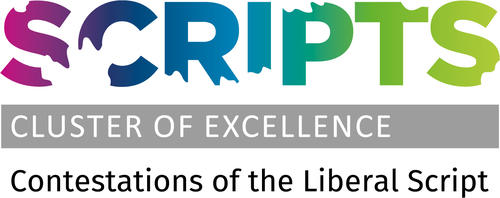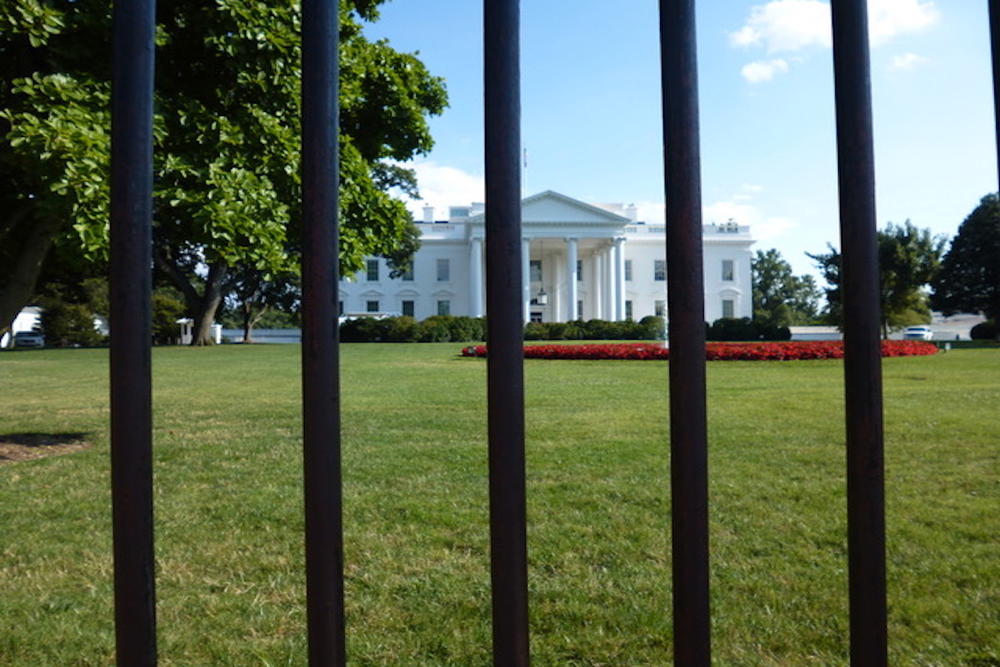Twilight States: Soviet Dysfunction and its American Reflection
by Kevin Axe and Keith Prushankin
№ 4/2020 from Dec 01, 2020
Kevin Axe and Keith Prushankin
By the time Mikhail Gorbachev took power in 1985, the Soviet Union had lasted 63 years. Experts from Moscow to Washington expected it to last for decades more. A mere six years later, the vaunted superpower had disappeared. Nearly three decades later, reflection on the processes that led to the superpower’s collapse have unearthed troubling similarities with the current condition of the United States. A series of systemic problems in Soviet governance ossified the decision-making mechanisms of government while creating a stratified system of privileges for elites. These problems are increasingly visible in the United States, and if history is a guide, could be the harbinger of a similar fate.
Among Americans, the fall of the Soviet Union is often the subject of gleeful Schadenfreude, especially on the right. Despite its seeming validation of the American model of political economy, the USSR’s demise better serves as a sobering warning of the effects of hubris and vainglory on the long-term viability of a national polity. The spectacular conflagration of state failure that befell Eurasia in late in the 20th century is a clear sign of the consequences of a political elite’s stubborn refusal to put the needs of the country above the needs of their own narrow subset. The Soviet Union can serve as a historical warning of the consequences of a state’s unresponsiveness to the needs of its people. The United States is approaching that point of no return. Retreating from it requires hard decisions to be made on the part of both the political class and the people. So far, the American political class has shown little willingness to sincerely engage with these critical shortcomings. Thus, the US finds itself careening blindly towards the fate of its opponent 30 years earlier.
Geriatric Government and Unresponsive Lawmaking
The first, and perhaps most glaring, example of comparison between the late Soviet Union and the contemporary United States is the age group to which many political leaders belong. Average ages of congressional legislators have consistently trended up, reaching an average age of 58 years in the House and 63 years in the Senate, while its leaders are consistently in their 70s and 80s. For comparison, the average age of the members of the Politburo, the country’s de facto ruling body, show a similar upward trend from below 40 in 1917, to 65 by 1974.
Why do we find gerontocracy inherently negative? Why is a clique of experienced and institutionalized lawmakers with firmly established networks of power problematic? We theorize that government of the aged results in unresponsive lawmaking. The result of such a network in the Soviet Union was a political class unable to comprehend the magnitude of changes, both institutional and operational, required to save the increasingly indebted and sclerotic Soviet economy. In the United States, the political leadership struggles to grapple with problems due to its rigidity. This takes many forms, from failing to agree on responses to Russia’s resurgence to struggling to comprehend the dangers of big tech monopolies. Meanwhile, aged legislators routinely decry public oversight of healthcare, to say nothing of structural reforms like a single payer system, as a supposed step toward socialism. This refusal to consider new approaches demanding energy and imagination will deepen entrenchment and resentment.
The stratification of age-based access to politics runs contrary at its core to the original intention of American government, to create a government of the people by led by representatives drawn from society. Individuals who have spent three-decade careers in Washington and are at or beyond typical retirement age have a minimal incentive to attempt reforms necessary to address the most pressing concerns of the nation, especially those of younger generations. These tired candidates for the nursing home lack the energy and imagination to attempt new ideas and bold strokes that will benefit the country. Instead they are as content to maintain their grip as their counterparts in the late Politburo.
The Outsized Power of Lobbyists
Through the 1970s and 80s, the Soviet system stagnated, giving rise to powerful cliques centered around federal ministries and state enterprises. According to economist and sociologist Tatiana Zaslavskaya, these ministries were “the most powerful state within the state,” transforming a minister into “an emperor” (Miller, 2016, 57). Historian Chris Miller writes, “In theory, the Communist Party controlled the economy, but in reality, the industries controlled the party. They were fully capable of defending their turf” (Ibid).
Central planners were susceptible to lobbyists. While the State Planning Committee (Gosplan) had 3,500 employees at its grand headquarters; its cafeteria recorded another 2,500 daily guests, who came to negotiate favors (Miller, 2016, 57). This ratio seems comically mundane compared to the number of registered lobbyists in Washington today, who outnumber congresspeople by nearly 21:1. In 2019, lobbyists spent $3.5 billion in Washington, with the healthcare industry alone investing nearly $600 billion in the lucrative business of state capture.
Gorbachev’s attempts to reform the Soviet system were diluted as soon as his diktats were sent down, with grand plans shrinking into the usual compromises negotiated between monopolists. Despite his powers, the General Secretary was unable to outmaneuver dense thickets of patronage networks operating independently of the central government, especially as he increasingly pushed against their interests (Bockman, 2002, 339). Eisenhower's warning about the American military-industrial complex, proved equally true for the US’ Soviet counterpart. Even secret internal Soviet figures are inaccurate and cannot be taken at face value, but according to Gorbachev’s memoirs, investigations found that military expenditures made up 40 percent of the state budget instead of the 16 percent he was initially informed, and its production accounted for 20 percent of the GDP, rather than the 6 percent he originally believed. Four in five rubles earmarked for science funding went to defense projects (Miller, 2016, 60). Despite the desperate need to cut spending to slow inflation, subsidies won by enterprises, collective farms, and the military-industrial complex only grew under Gorbachev.
Two Classes and the Stratification of Benefits
In the Soviet Union, members of the elite nomenklatura (approximately 3 million people including officials and their families) enjoyed incredible perks. Beyond their relatively modest salaries, the Soviet elite received special apartments, access to luxury stores, the opportunity to travel and study abroad, and superior healthcare. These were luxuries of which the average Soviet citizen, accustomed to queues and years-long waiting lists for consumer goods, could only dream.
The stratified nature of material benefits produced by America’s gerontocratic system is exemplified by its healthcare system. Like other employed Americans, congresspeople purchase coverage from for-profit healthcare corporations, although their monthly premiums are heavily subsidized through the much-maligned Affordable Care Act (“Obamacare”). Beyond this standard coverage, members of Congress also enjoy access to alternative healthcare providers including an in-house doctor and free access to nearby military medical facilities. Most members of Congress receive an annual salary of $174,000. For comparison, the average American, making a salary of $51,916.27, spends ten percent of their annual household income on healthcare. Between 1984 and 2018, medical insurance costs increased by 740 percent. This is directly tied to the increased market share of for-profit hospitals and medical providers.
Congress is one of the wealthiest groups of Americans. The median net worth of its 2019 membership was just over $1 million. Of course, congresspeople are far from the only super-rich group in the United States. Unearned wealth in the form of rents, dividends, and royalties, contributes to 81 percent of the total wealth held by over 10,000 individuals or families making over $10 million. Only 19 percent are earned wages. Looking only at wages, the gap is no less shocking, as the data on another subset of the American nomenklatura shows. Average CEO pay has increased 940 percent since 1978. In the same timeframe, that of the average worker increased by only 12 percent. As a result of this grotesque imbalance, the American nomenklatura (numbering approximately 10.5 million households in 2020) enjoy similar benefits to their Soviet counterparts. Preferential access to elite schools, economically out of reach for all but a few lucky recipients of scholarships, provide privileged access to jobs with high starting salaries. A web of familial connections provides opportunities for lucrative business relationships, and a lower birth rate among the upper class leads to an entrenched concentration of wealth passed to heirs across generations (see Jean-Michel Paul’s The Economics of Discontent). In effect, the American nomenklatura have become a hereditary aristocracy with privileged access to government.
The stratification of society into two classes breeds resentment and weakens the social contract. In the Soviet Union, the lives of the elites were private; hidden from public scrutiny by high walls and an unspoken aura of separateness. In the United States, our elites are on display for the world to see, celebrated by a voyeuristic media establishment that presents them as shining idols of the capitalist dream. Amid discourse that paints every person as a millionaire in waiting, frustration and resentment build as the millions living paycheck to paycheck wonder why they have failed to make the fortune they deserve.
A Troubling Prophecy
The United States faces a crisis thanks to its divided society and unresponsive government. An increasingly aging and out of touch political class is unwilling to address the chasm between the majority of Americans and elite cliques enjoying outsized material benefits and access to power. Money is increasingly funneled to the military-industrial complex and other interests that have invested heavily in lobbying lawmakers, leaving little for desperately-needed reforms of a failing, inefficient healthcare system, crumbling infrastructure, and underfunded education system. Today, the US shares many of the problems of the Soviet Union as it spiraled towards breakup, including gerontocracy, corruption driven by lobbyists, and the hoarding of benefits by elites. The USSR may have crumbled, but the US need not share its ultimate fate.
Kevin Axe and Keith Prushankin are doctoral researchers with the SCRIPTS Program at Freie Universität Berlin.
Literature:
Bockman, J., & Eyal, G. 2002, 'Eastern Europe as a Laboratory for Economic Knowledge: The transnational roots of neoliberalism'. American Journal of Sociology, vol. 108, no. 2, pp. 310-352.
Miller, C. 2016, The Struggle to Save the Soviet Economy: Mikhail Gorbachev and the collapse of the USSR. UNC Press Books.

